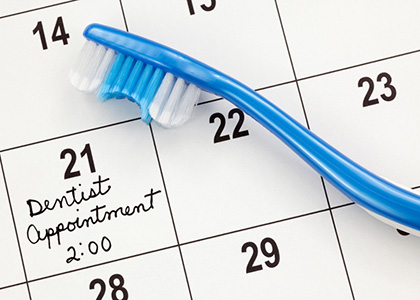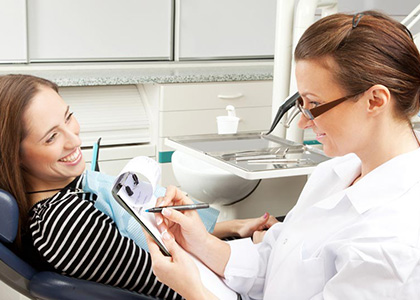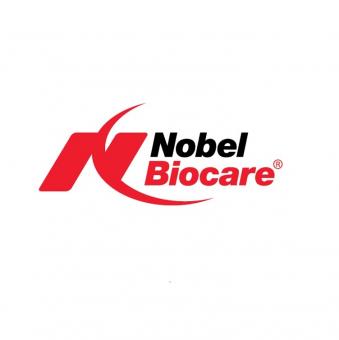Treatment of Purulent Gingivitis
Introduction
Oral health is crucial for overall well-being, and the condition of the gums plays a particularly important role. Gingivitis, especially purulent gingivitis, is a problem that not only causes pain and discomfort but can also lead to serious health consequences if not treated promptly. This article provides a detailed overview of what purulent gingivitis is, its symptoms, causes, and available treatment options.
What is Purulent Gingivitis?
Purulent gingivitis, also known as a periodontal abscess or gingival abscess, is a severe gum disease usually caused by bacterial infection. This condition occurs when bacteria penetrate the space between the gum and the tooth, causing an infection. The result is a painful, pus-filled abscess that can lead to significant swelling, redness, and sensitivity.
This inflammation not only represents a local problem but can also affect the entire body. If the infection is not treated in a timely manner, the bacteria can spread beyond the oral cavity and cause severe health complications.
Symptoms of Purulent Gingivitis
The symptoms of purulent gingivitis are severe and easily recognizable, although in many cases the disease initially presents only mild symptoms that can be easily mistaken for other, less severe oral issues. Below, we detail the most common symptoms of purulent gingivitis:
Swelling and Redness: The gums can become significantly swollen and turn a bright red due to inflammation. The swelling is often localized and clearly palpable in the infected area.
Pus Formation: One of the most striking signs of purulent gingivitis is the accumulation of pus in the gums. This pus typically collects in the space between the gums and the teeth and can often seep outward.
Pain and Sensitivity: The infected area becomes painful and may show increased sensitivity to cold, heat, and touch. The pain often has a throbbing character and can persist into the night.
Chewing Difficulties: Purulent gingivitis can make chewing difficult, as pain and swelling hinder normal dental function.
Bad Breath and Unpleasant Taste: Infection often causes bad breath (halitosis) and an unpleasant taste in the mouth, which is due to the purulent discharge.
Fever and General Malaise: In severe cases, the infection can cause systemic symptoms such as fever, headaches, and general weakness.
Causes of Purulent Gingivitis
Purulent gingivitis can develop due to numerous causes, some of which are preventable while others are consequences of the condition of the teeth and gums. Below are the most common causes:
Inadequate Oral Hygiene: Improper cleaning of the teeth and gums can lead to the accumulation of bacteria, which can cause gingivitis and eventually lead to purulent gingivitis. The accumulation of tartar and plaque provides an excellent breeding ground for bacteria.
Neglected Dental Problems: Untreated tooth decay, cracked teeth, or loosened fillings can allow bacteria to penetrate deep into the teeth, leading to infection and abscess formation.
Gum Diseases (Periodontitis): In cases of chronic gingivitis (gingivitis) or a more severe form of periodontitis, bacteria can penetrate deep into the gums, causing purulent inflammation.
Post-Dental Procedures Infections: Certain dental treatments, such as tooth extraction or root canal treatment, can carry the risk of infection, which can lead to purulent gingivitis if proper care is not followed after the procedure.
Weakened Immune System: Weakening of the immune system, due to stress, illnesses, or medication treatments, can increase the risk of bacterial infection, leading to gingivitis.
Diagnosing Purulent Gingivitis
The diagnosis of purulent gingivitis is generally made during a dental examination. The dentist conducts a thorough examination of the oral cavity, takes X-rays, and occasionally uses special tools to determine the presence and severity of the abscess.
X-rays help assess how deeply the infection has penetrated the gums and the root of the tooth and whether the bones are affected by the inflammation. This information is essential for planning appropriate treatment and preventing potential complications.
Treatment Options for Purulent Gingivitis
The treatment of purulent gingivitis can vary depending on the severity of the problem and the extent of the infection. The goal is always to eliminate the infection, reduce inflammation, and restore the health of the teeth and gums.
1. Antiseptic Rinses and Local Treatments
In mild cases, the dentist may recommend antiseptic mouth rinses or local antiseptic gels, which help reduce the number of bacteria in the oral cavity and alleviate inflammation. These products are generally based on chlorhexidine or hydrogen peroxide and can be used multiple times a day to curb the infection.
2. Antibiotic Treatment
If the infection is more severe and there is a risk that the bacteria will spread beyond the oral cavity, antibiotic treatment is essential. Antibiotics help eliminate the infection, reduce inflammation, and prevent the recurrence of the abscess.
Antibiotic treatment is usually prescribed by the dentist, and it is important for patients to follow the prescribed dosage and duration strictly to ensure the effectiveness of the treatment.
3. Opening and Draining the Abscess
In cases of severe purulent gingivitis, it may be necessary to open and drain the abscess. This procedure is performed by the dentist, who makes a small incision in the gum to allow the pus to escape. This intervention can provide immediate relief from pain and pressure and help prevent the spread of the infection.
After drainage, the dentist may prescribe regular check-ups to ensure that the infection has been eradicated and that the affected area is healing properly.
4. Root Canal Treatment
If the infection has spread to the root canals of the tooth, root canal treatment may be necessary to eliminate the infection and save the tooth. During root canal treatment, the dentist removes the infected or dead dental pulp and cleans the canals, then disinfects them. After the root canal treatment, the canals are sealed to prevent reinfection.
5. Tooth Extraction
If the infection has severely damaged the tooth and other treatment methods are not effective, it may be necessary to remove the tooth. The purpose of tooth extraction is to completely eliminate the infection and prevent further complications.
After tooth extraction, the dentist may suggest replacing the missing tooth, for example, with an implant or bridge, to preserve oral functions and aesthetics.
6. Home Care and Prevention
During and after the treatment of purulent gingivitis, home care and prevention are essential. Thorough and regular oral hygiene, including brushing, using dental floss, and applying mouth rinses, helps prevent the accumulation of bacteria and the development of new infections.
It is also important for patients to regularly visit the dentist for check-ups and, if necessary, professional cleanings to remove tartar and plaque.
Preventing Purulent Gingivitis
To prevent purulent gingivitis, patients should pay particular attention to oral hygiene and regular dental check-ups. The following tips can help prevent the disease:
Regular Tooth Brushing: It is recommended to brush teeth at least twice a day, in the morning and evening, using fluoride toothpaste to remove plaque and bacteria that can cause gingivitis.
Cleaning Between Teeth: Regular cleaning of the interdental spaces with dental floss or interdental brushes helps remove food residues and plaque that can accumulate in areas that are difficult to reach with a toothbrush.
Regular Dental Check-ups: It is advisable to visit the dentist at least twice a year to allow the professional to detect dental problems early and treat them if necessary.
Healthy Diet: A healthy, balanced diet rich in vitamins and minerals contributes to the health of the gums and teeth. Avoid excessive sugar consumption, which can promote tooth decay and gingivitis.
Stress Management: Stress can weaken the immune system, increasing the risk of infections. Effective stress management, such as regular exercise, relaxation techniques, or adequate sleep, is important.
Avoiding Smoking: Smoking significantly increases the risk of gum diseases, including purulent gingivitis. Quitting smoking helps preserve the health of the gums and teeth.
When to Visit a Dentist?
It is important for patients to visit a dentist immediately if they notice symptoms of purulent gingivitis. Timely diagnosis and treatment are key to preventing the worsening of the disease and the development of complications.
If the gums are swollen, red, painful, and pus appears, or if patients experience fever and general malaise, immediate dental intervention is necessary.
Get Rid of Purulent Gingivitis with Fehérvári Dental
Don't let purulent gingivitis further degrade your quality of life and endanger your health! The expert team at Fehérvári Dental is ready to treat the problem painlessly and effectively, restoring the health and confidence of your smile. Trust us with your care, and experience what it feels like when professionals take care of the full restoration of your teeth and gums. Book an appointment today and take a step towards complete healing! Trust us with your care—we do everything to ensure you can enjoy pain-free days again!




















